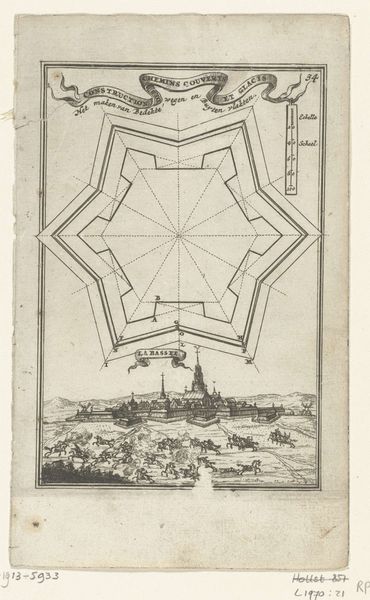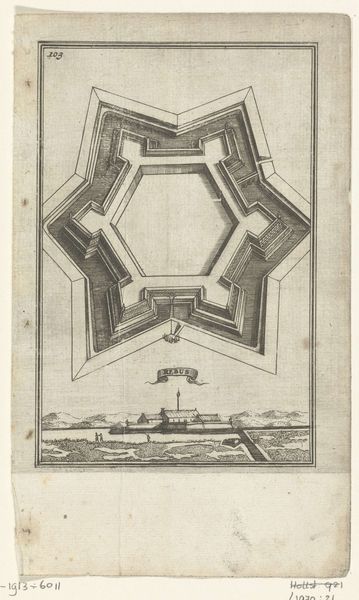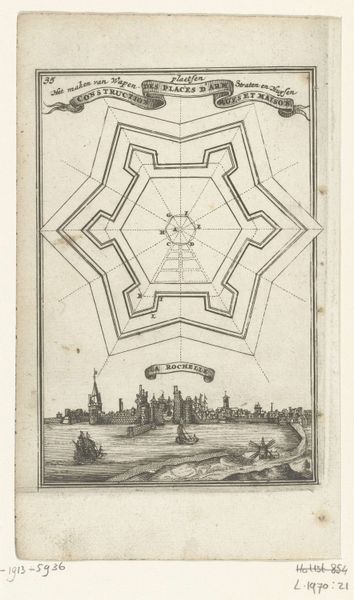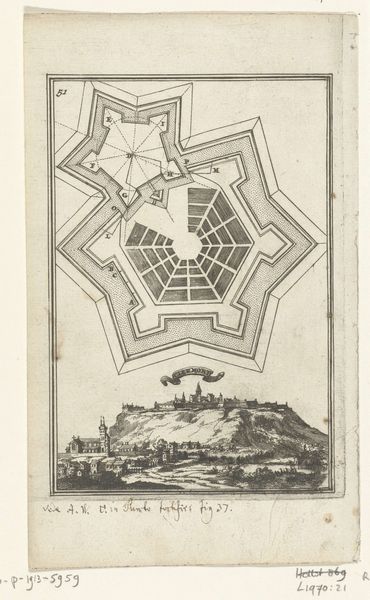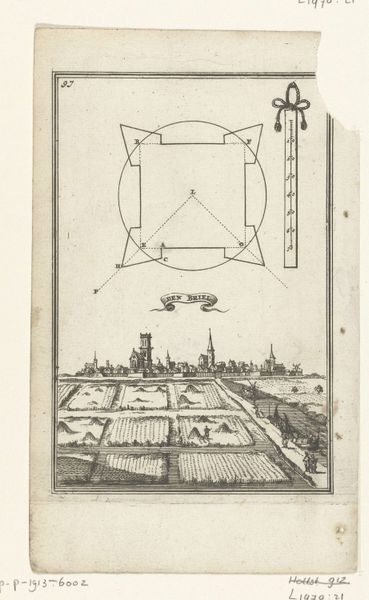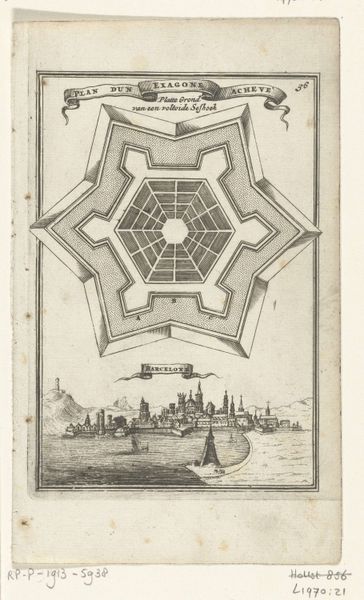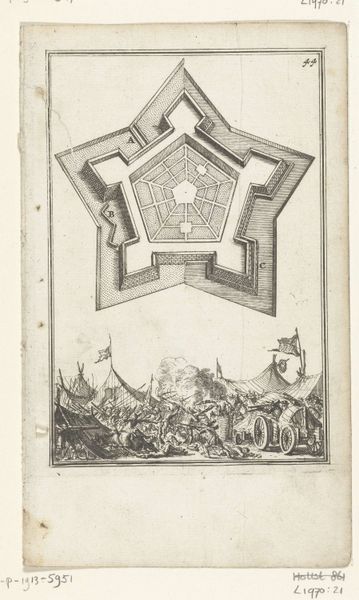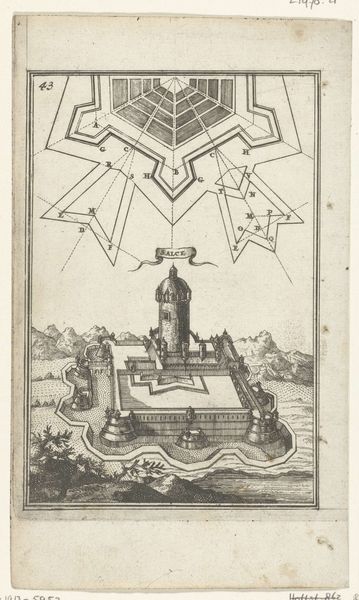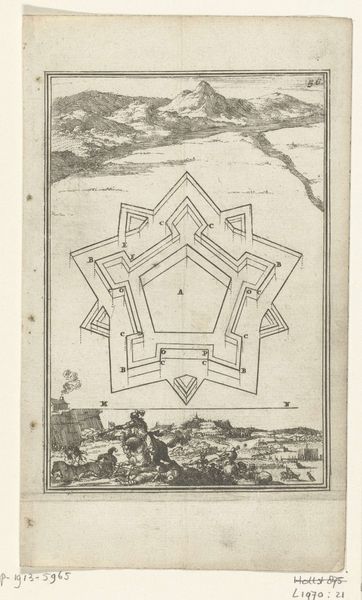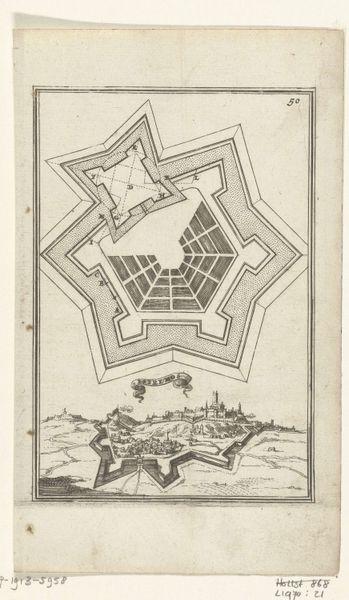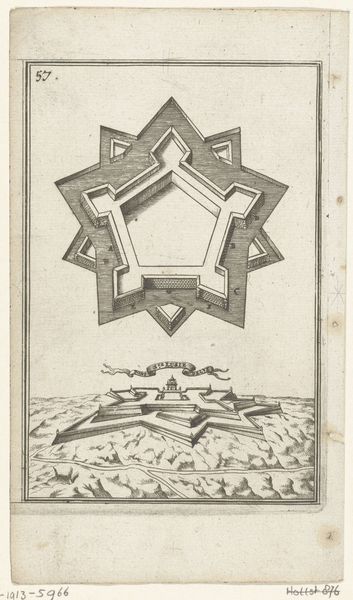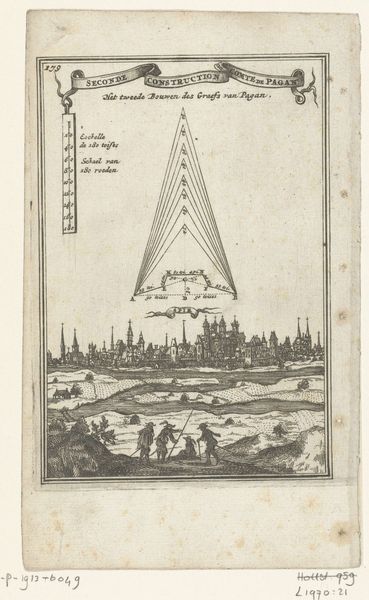
Illustratie voor 'Den Arbeid van Mars' van Allain Manesson Mallet 1672
0:00
0:00
romeyndehooghe
Rijksmuseum
print, etching, engraving
#
baroque
# print
#
etching
#
cityscape
#
engraving
Dimensions: height 185 mm, width 113 mm
Copyright: Rijks Museum: Open Domain
Curator: The precise lines, the stark contrast—there’s an immediate legibility that draws me in. This composition presents a fascinating duality of form. Editor: Indeed. This is a print titled "Illustratie voor 'Den Arbeid van Mars' van Allain Manesson Mallet," produced by Romeyn de Hooghe in 1672. The Rijksmuseum houses this etching and engraving, which is part of a broader treatise on fortifications. I think it’s quite imposing in its commentary. Curator: Precisely! Consider the upper portion. The abstracted geometric shape—a star fort, a bastion—how that precise geometry contrasts against the relatively free rendering of the cityscape. It offers us a visual interplay of control and potential chaos, the intellectual design against the lived environment. Editor: From a socio-political point of view, it represents the Dutch Republic's complex relationship with military power. Here we see an engagement with contemporary advancements in military engineering. De Hooghe wasn’t only creating a technical diagram, but also participating in the discourse around Dutch identity, commerce and global conflict. It suggests a level of preparedness and, one might argue, subtle bravado. Curator: Note how the lines both define the negative space within the bastion and describe the textures of the architecture. The engraver uses varied stroke weights to convey depth and volume, almost a tension. Is it about holding space? Laying bare the method itself? Or flaunting this war structure against an unsuspecting populace? Editor: Also consider where this was intended to appear. It was an illustration meant to accompany Allain Manesson Mallet’s publications on fortifications. That is part of its power, to inform military strategy and to assert authority in a world increasingly shaped by war. The display and availability of technical knowledge shifted power in Europe and abroad. Curator: It is in these contradictions of graphic intent and rigid geometric structures, that De Hooghe created an engagement not only with Dutch advancement in this time, but a composition meant to ask its viewers what these objects of progress and war might truly represent. Editor: Yes, it speaks volumes, from military ambition to scientific development, capturing the tense political landscape of its era through a seemingly technical lens. A society at the threshold of early globalization.
Comments
No comments
Be the first to comment and join the conversation on the ultimate creative platform.
